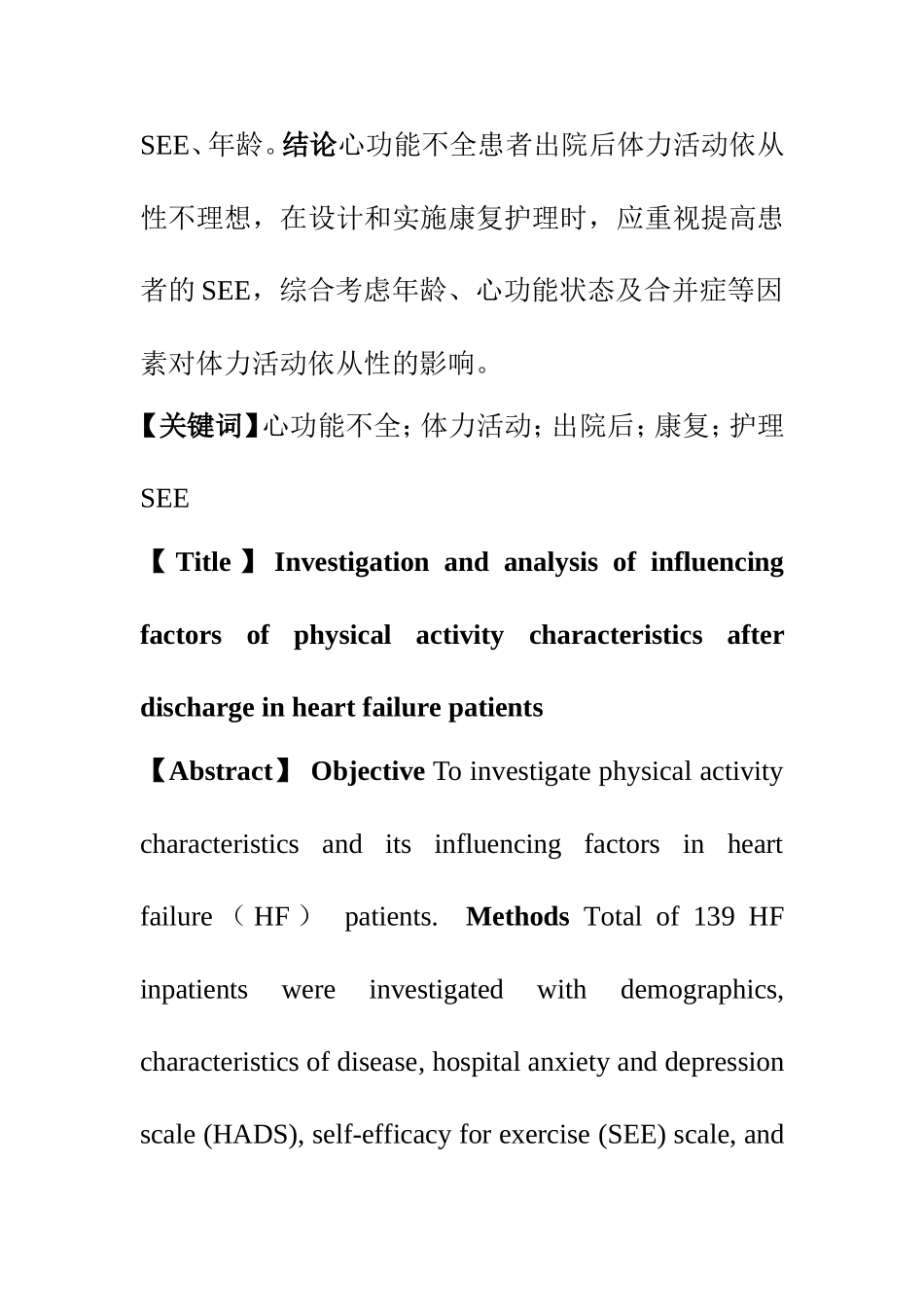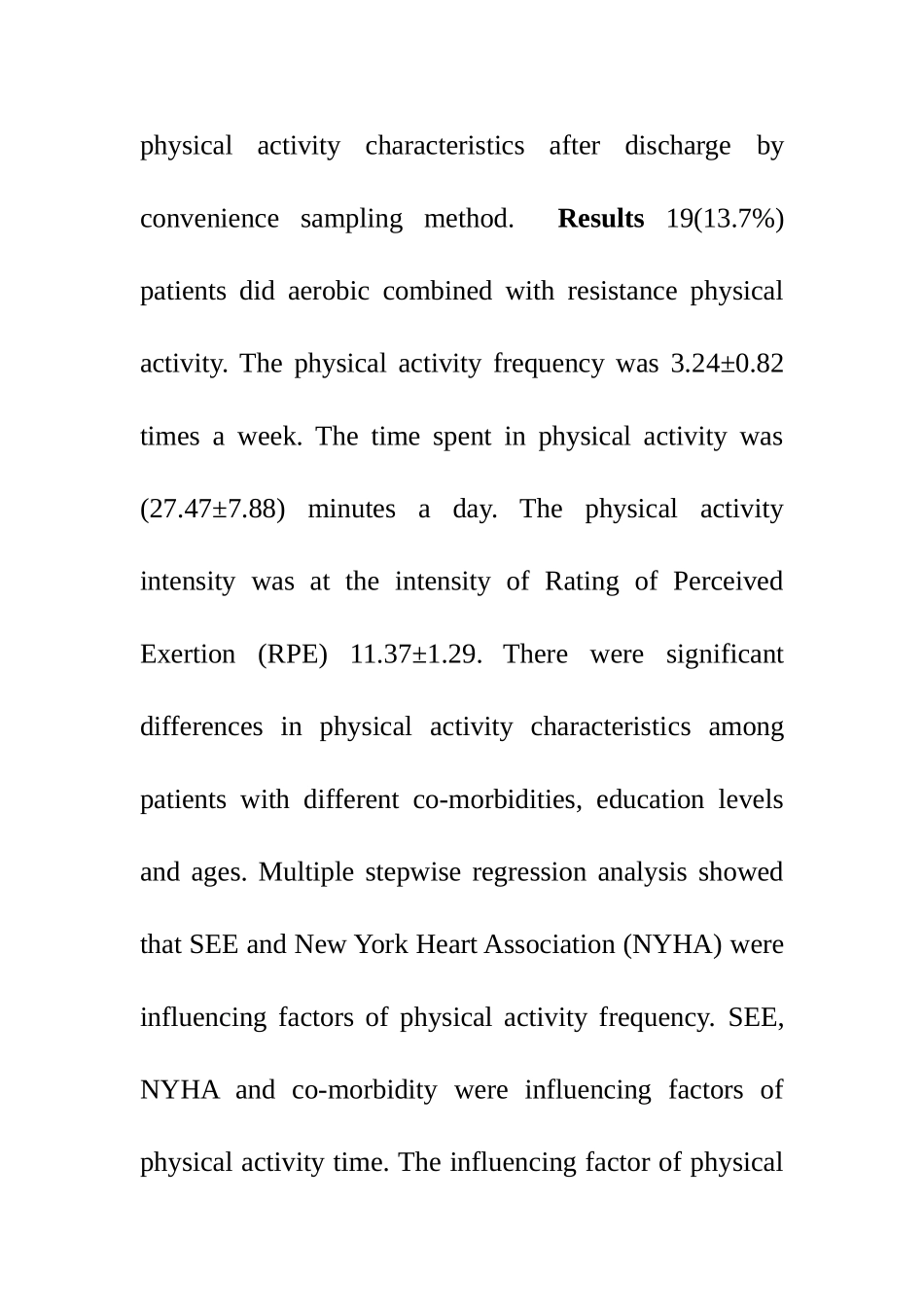心功能不全患者出院后体力活动特征调查及影响因素分析【摘要】目的 了解心功能不全患者出院后体力活动特征及其影响因素,为心功能不全患者康复护理提供理论依据。方法采用便利抽样方法,调查 139 例住院心功能不全患者一般资料、心功能不全疾病特征、焦虑抑郁程度(HADS)体力活动自我效能(SEE)及出院后体力活动特征。结果心功能不全患者进行有氧体力活动120 例(86.3%),有氧联合抗阻 19 例(13.7%);体力活动频率 3.24±0.82 次/周;时间为 27.47±7.88 分钟/天;强度为自感劳累分级(RPE)11.37±1.29。不同合并症数目、文化程度、年龄的患者体力活动形式差异显著;多元逐步线性回归分析显示,体力活动频率的影响因素为 SEE、心功能,体力活动时间的影响因素为 SEE、心功能、合并症数目,体力活动强度的影响因素为SEE、年龄。结论心功能不全患者出院后体力活动依从性不理想,在设计和实施康复护理时,应重视提高患者的 SEE,综合考虑年龄、心功能状态及合并症等因素对体力活动依从性的影响。【关键词】心功能不全;体力活动;出院后;康复;护理SEE【 Title 】 Investigation and analysis of influencing factors of physical activity characteristics after discharge in heart failure patients【Abstract】 Objective To investigate physical activity characteristics and its influencing factors in heart failure ( HF ) patients. Methods Total of 139 HF inpatients were investigated with demographics, characteristics of disease, hospital anxiety and depression scale (HADS), self-efficacy for exercise (SEE) scale, and physical activity characteristics after discharge by convenience sampling method. Results 19(13.7%) patients did aerobic combined with resistance physical activity. The physical activity frequency was 3.24±0.82 times a week. The time spent in physical activity was (27.47±7.88) minutes a day. The physical activity intensity was at the intensity of Rating of Perceived Exertion (RPE) 11.37±1.29. There were significant differences in physical activity characteristics among patients with different co...


